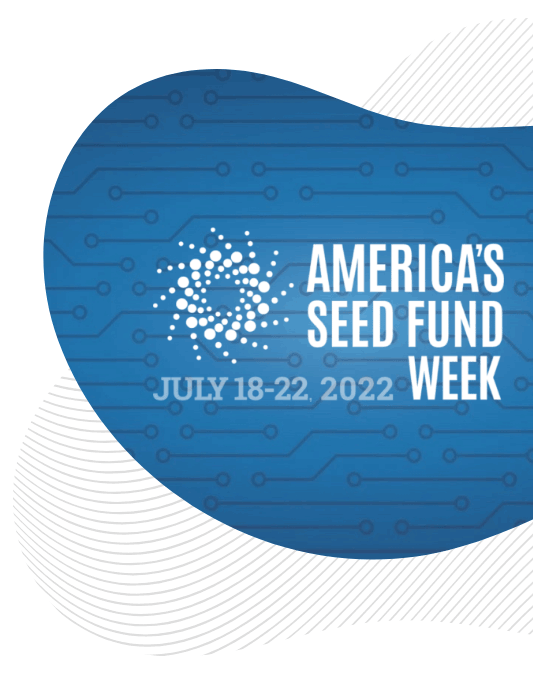When you think of “early-stage funding,” what first comes to mind?
While angel investors and venture capital firms are often considered a primary funding source, the largest funder for small businesses involved in research and development is actually the U.S. government.
Indeed, the U.S. Small Business Administration (SBA) is the nation’s largest source of early-stage startup funding for research and development, with $3.7 billion budgeted annually to support the financing of cutting-edge, high-risk technologies. These funds are distributed in the form of Small Business Innovation Research (SBIR) and Small Business Technology Transfer (STTR) awards from government agencies involving research with extramural budgets of $100 million or more – otherwise known as “America’s Seed Fund.”
According to an account of the program’s history, the SBIR/STTR program has resulted in 70,000 issued patents and roughly $41 billion in venture capital investments since it was signed into law 40 years ago by President Reagan. Clearly, it is a proven model for advancing research, maximizing limited resources and building sustainable businesses.
These tips from our Cenfluence team can help Florida technology businesses navigate the SBIR/STTR award process to secure a portion of the billions in funding available:
1. Plan ahead.
Navigating SBIR/STTR program applications can be a resource-intensive process. Participants must have the capacity to complete required registrations, assemble the application and wait up to six months for a decision on their funding proposal. Successful applications should also include a reasonable short-term work plan and preliminary data that indicates the business will experience success during the project’s lifespan. Although many states offer support, the process can be time-intensive and complicated — especially for first-time applicants. We recommend plugging into a network, such as Cenfluence or The Corridor’s SBIR Catalyst program, for support.
2. Understand the award types.
Eleven federal agencies participate in the SBIR/STTR programs, each setting aside 3.2% of their extramural research and development budgets for innovative small businesses attacking problems in several areas. A list of open topics and solicitations are available on the SBA website. To identify relevant award opportunities, we recommend searching for keywords related to your technology. Cenfluence Cluster Members also benefit from receiving a carefully curated list of award opportunities in each Cluster Collisions members-only email newsletter.
Awards are provided in several phases.
- Phase I supports proof-of-concept research over a period of six to 12 months, with awards ranging from $50,000 to $250,000.
- Phase II supports prototyping over a period of 24 months, with awards of $500,000 to $1.5 million. Only Phase I award recipients are eligible to apply for Phase II, except in some cases with a proven commercial technology being adapted for government use through a Phase II Fast Track or Direct to Phase II award.
- Phase III supports the transition from SBIR funding to more substantial government or commercial contracts or private investments. It allows the business to become a “sole-source” provider to the government and moves the technology through the final stage of commercialization into the marketplace. Notably, some government agencies issue “contracts,” while others issue “grants.” This important distinction may impact execution. In contracts, the government agency is acting as the customer with detailed expectations and specifications. There is a greater focus on procurement or acquisition, and the business is evaluated by technical points of contact. However, grants are more flexible, allowing businesses to propose the problem they are trying to solve and prospective solutions. Either way, SBIR/STTR awards are fabulous tools to de-risk and validate technology without relinquishing ownership or intellectual property.
3. Build a strong team.
SBIR/STTR awardees must also have the research and development personnel, capabilities, equipment and facilities required to credibly carry out a significant portion of the scope of work. This can include subcontracts or consulting agreements, however, businesses involved in Phase I awards must carry out at least 67% of the scope of work for SBIR or 40% for STTR.
Projects allow for university collaboration, which is a popular option in areas like Central Florida, where several universities house expert faculty who are experienced at partnering with private industry. The principal investigator must be employed at least 51% with the business partner at the time of receiving their SBIR or STTR award and this is a great way for small companies to bring on skilled technical talent.
Outside the execution team, business owners may also want to identify mentors who can coach them throughout the process. Many of Central Florida’s entrepreneurial support organizations offer this resource. As a program of the Florida High Tech Corridor, Cenfluence connects Cluster Members to the regional SBIR Catalyst initiative, which provides SBIR mentorship and facilitation specifically for women-owned businesses. Contact us to learn more.
Take the Leap
Applying for SBIR/STTR funds can be intimidating, but recipients know the benefits far outweigh any challenges along the way. These awards often serve as the gateway to future funding opportunities, such as private investment, and can be a valuable step toward building technology for sustainable revenue generation. Recipients are automatically eligible for supplemental funding opportunities offered through each government agency, and local businesses can maximize their funds through The Corridor’s Matching Grants Research Program.
Unsure whether the SBIR/STTR program is a potential source of funding for your company? Review this checklist developed by The Corridor, Cenfluence and our partners.
We also recommend reviewing these resources from the SBA:
- America’s Seed Fund Week Events: https://www.americasseedfund.us
- SBIR/STTR Training: https://www.sbir.gov/events
- SBIR/STTR Tutorials: https://www.sbir.gov/tutorials
For more resources and information about the SBIR/STTR programs, or to become a Cenfluence Cluster Member, please connect with us.

